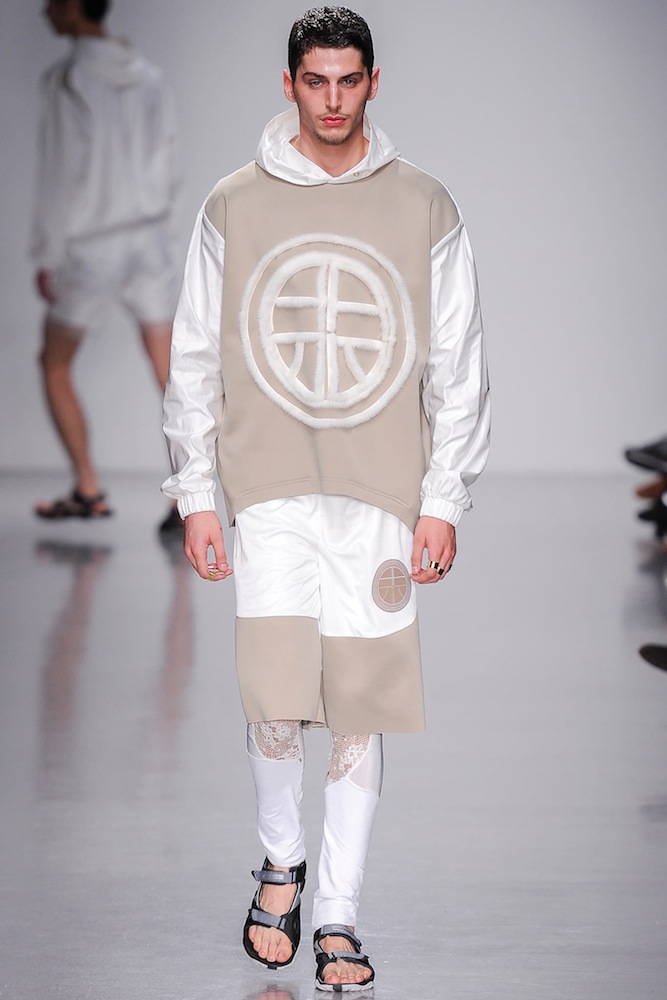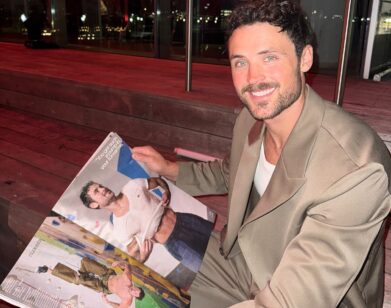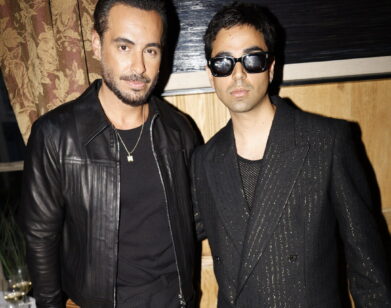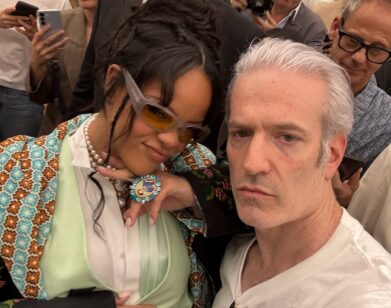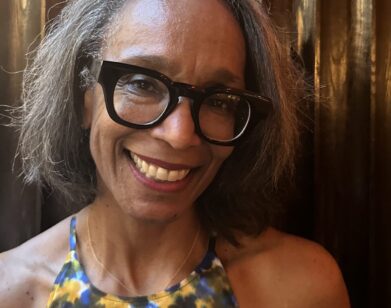Menswear Monday: Astrid Andersen
There’s more to menswear than suits and ties. Every other Monday, we’re giving the fastest developing facet of fashion the attention it deserves and introducing the designers, buyers, trendsetters, and stylists you need to know.
London may have usurped Milan as the seat of talent and the center of attention in the menswear industry, but the city’s rising stars are come from all over, from Beijing to Copenhagen. Astrid Andersen, a Denmark native and recent alum of the same Topman-sponsored group show that minted Agi & Sam, broke out on her own this season in a solo show that exploded masculine sportswear with an arsenal of flowers, white lace, and velour.
That subversiveness notwithstanding, this was Andersen’s most commercially viable collection to date, her cultish logo plastered on very American basketball shorts and hoodies. The design, she explains, comprises her initials, the bottom of a basketball, and a chain—an explicit visual nod to the “urban” culture that the rest of the industry so evasively references. More so than ever, Andersen was focused less on high-concept culture crossing or genderbending, and more on the sheer sexiness of the men she was dressing—what she calls “a masculine attraction with feminine references.” It’s an aesthetic that few designers have realized as fully (or as profitably) as Andersen and her Stateside counterpart, Shayne Oliver of Hood By Air. We got in touch with Andersen to learn more about the science of streetwear stardom.
DESIGNER: Astrid Andersen
BASED IN: Copenhagen
SHOWING IN: London
LONDON CALLING: I get to be both in London and Copenhagen, which makes the two cities even more magical to me. London is where the core creative vision for the brand lives. London is where there are no presumptions about what is good taste and bad taste. It’s like there’s a way for everything if you’re just convincing in your aesthetic—I love that.
BOYS’ (AND GIRLS’) CLUB: In London, you see so many amazing women designing menswear now. I think it’s a natural progression of the guys in the street. When you look at them today, there’s no real relevance in gender. That’s not what it’s about. And when girls and boys dress the same, it’s not unisex, either. It’s like this new understanding of the feminine and masculine within every human being. At the moment, [menswear] just has greater excitement, and that comes from the guys on the street changing everybody’s perception. As a designer, I’m just translating that.
POLYAMORY: Craftsmanship is something that will always draw me in, ranging from different techniques of cutting and using fur to laser-cut performance garments and 3-D body scans. I love the technology that goes into creating manmade fabrics. I get as excited about a polyester in the right gauge and weight as others get about the finest wool.
BABY STEPS: As a child, I always made clothes with my mom. I remember specifically wanting a red polka-dotted flamenco dress after a vacation in Spain, so my mom listened to my description and made it. It was in no way flattering, but I loved it. I decided [I wanted to be a designer] probably in that high moment of wearing polyester polka satin with ruffles. It took me a lot of years after that to find the design path that suited me and my expression. I think, really, this didn’t fall into place before I met Ike Rust, my mentor from The Royal College of Art in London.
MOOD BOARD: For Spring 2014, it was a trip I made to Florence and a specific crystal collection I saw there. I was quite overwhelmed by their powerful impression. And naturally I’m drawn to things that appear both very hard and sensitive at the same time. Right now we are still putting the pieces together [for Fall 2014], but a main influence has been the movie Only God Forgives by Nicolas Winding Refn. It also holds this extremely masculine and brutal scenario combined with a very delicate aesthetic and sound. I do find my biggest inspiration from guys in the street. They have all the power.
Menswear Monday runs every other Monday. For more, click here.

